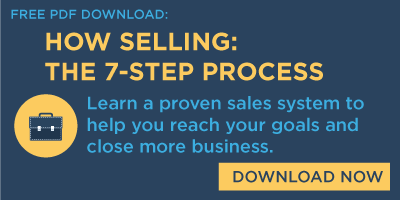
In Part 1 of this two-part series, I discussed some of the reasons why the sales cycle is getting longer for many deals (sales cycle is the term that describes the time that elapses from the first contact between salesperson and prospect to a done deal). These longer cycle times are gumming up the sales pipeline for many companies, postponing revenue, adding expense, increasing uncertainty, and making life miserable for a lot of sales executives.
Some of this slowdown in the sales cycle is unpreventable. But that’s no reason to overlook the many things salespeople can do to counter the trend and speed things up. Here are some ways that smart salespeople keep opportunities moving:
-
Approach prospects who are a better fit to your Ideal Customer Profile. They’ll be more receptive to your request to meet.
-
Don’t respond with gusto to every RFP that comes your way. Analyze each one, figure out how you got on the list, determine if you’re there just because they needed to crank out three RFPs, evaluate your likelihood of winning, and modulate your response accordingly.
-
Both of the above steps are designed to keep garbage out of your pipeline. Not only do such “opportunities” tend to move very slowly, they keep you from giving attention to those that can move more quickly.
-
Do your homework. Be a pro. Know your prospect, learn his or her decision-making style, process, and influencers. Understand the needs. Some of this can be researched in advance; other information should be developed very early on in your interaction.
-
Don’t be afraid to ditch a prospect if the information you gather makes it look like a long shot. Or park the prospect at the edge of your pipeline, in space you reserve for opportunities that will progress only if the prospect pushes them forward. Save your time and resources for the more-promising deals.
-
Use a strong Valid Business Reason to secure the appointment. One of the four criteria that make a VBR strong is that it includes a degree of urgency, a reason to meet with the salesperson sooner rather than later.
-
Nail down the prospect’s specific needs so that the solution you develop is more perfectly zeroed in on those needs. The better the solution, the faster it tends to move through the decision-making process. And vice-versa.
-
The solution you come up with won’t be perfect right out of the gate. So don’t propose it. Discuss it. Collaborate with the prospect to vet it, evolve it, perfect it. Identify every significant decision-influencer and collaborate with each one. Any one of them could be a No; your job is to turn each into a Yes.
-
Use their slowdowns to your advantage. Keep meeting with decision-influencers, and if possible, with the decision-maker. Keep vetting, keep turning No votes into Yes votes. This will keep your deal alive (and its likelihood of happening going up), and often will turn their slowdown into a speedup. In some cases, it will convince you to park that prospect at the edge of your pipeline, so you can focus on better opportunities.
-
Take some kind of action every week. Don’t ever let the slowdown be your fault.
-
Don’t submit your final proposal until you have every reason to believe it contains no surprises at all, that every No has been turned into a Yes. Nothing slows down your sales cycle and gums up your pipeline more than a pending proposal with defects that make it controversial.
What Not to Do
Among the many smart moves a salesperson can take to shorten the sales cycle is not skipping steps. Yet it’s the first inclination of the impatient salesperson! Eager to reach the conclusion, too many salespeople just “cut to the chase.” Impatience is a strength when it drives the salesperson forward, but it must be balanced by savvy and process.
Every good sales process has its steps (our 7-step process is here). The best salespeople know what we have seen over and over in our company’s 32 years of helping sales organizations grow: Don’t skip steps. Those steps are part of the process because they’ve proven their value over the years. Rather than dropping steps, salespeople should complete each step as quickly as possible (consistent with quality work) and to use the prospect’s slowdowns to improve the quality of their work.
Long sales cycles are a fact of life these days. But sales organizations are not powerless to shorten that cycle time. Salespeople should use the tools at their disposal to keep opportunities moving through their pipeline—or they should park them off to the side so they don’t get in the way of those that are moving.



